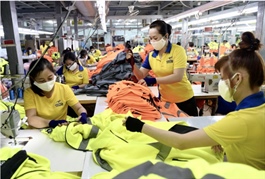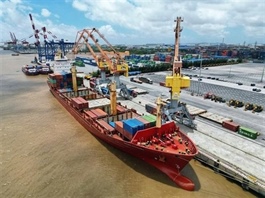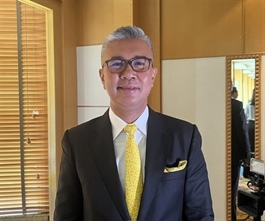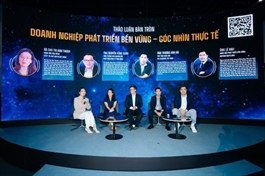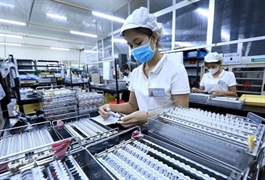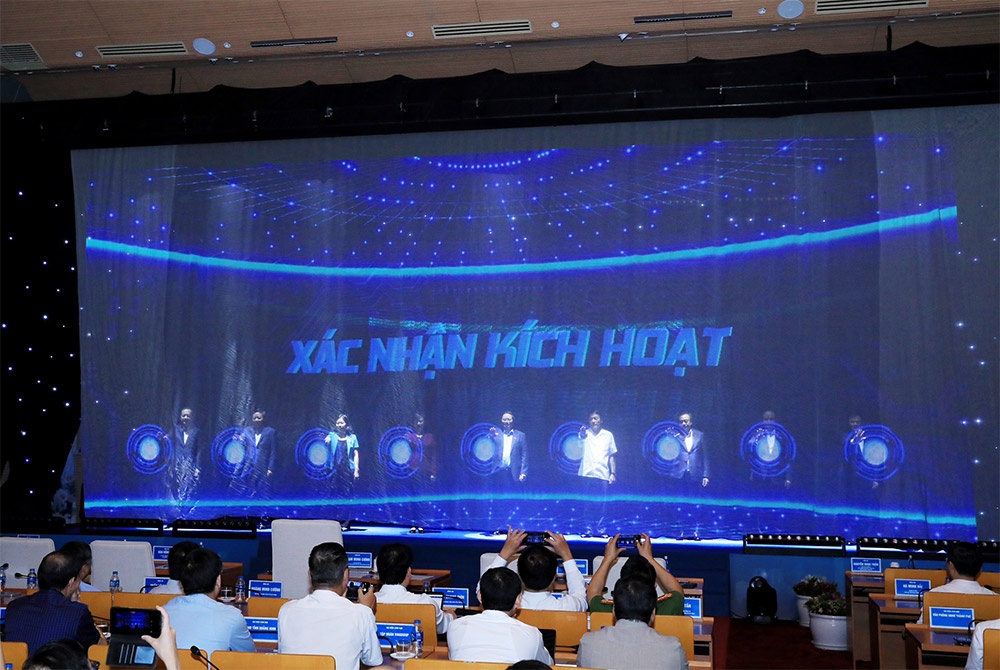Transitioning from a linear economy to a circular economy to address the "Solid Waste" problem
Transitioning from a linear economy to a circular economy to address the "Solid Waste" problem
Developing a circular economy is seen as a key method to harmonise the relationship between economic growth and environmental protection, paving the way towards a green economy and sustainable development. Addressing the solid waste problem is essential to this transition.
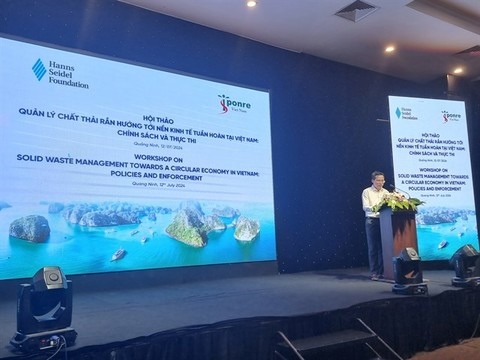
At the workshop "Solid Waste Management towards a Circular Economy in Việt Nam: Policy and Enforcement" in Hạ Long City, Quảng Ninh Province. — VNS Photo Tiendat |
This topic was discussed at the seminar "Solid Waste Management towards a Circular Economy in Việt Nam: Policy and Enforcement" organised by the Institute of Strategy and Policy on Natural Resources and Environment in collaboration with the Hanns Seidel Foundation in Quảng Ninh on the morning of July 12.
A circular economy is a closed production cycle where waste is reused as raw materials for production, thus reducing all negative impacts on the environment, ecosystems, and human health.
Mai Thanh Dung, Deputy Director of the Institute of Strategy and Policy on Natural Resources and Environment, said, “Effective solid waste management is one of Việt Nam's top priorities to address environmental pollution and achieve sustainable development goals. The government aims to achieve a 95 per cent collection and treatment rate of municipal solid waste in urban areas, 90 per cent in rural areas, and 98 per cent for hazardous waste by 2030.”
Dung noted that in the context of developing a circular economy to contribute to achieving sustainable development goals by 2030 and net-zero emissions by 2050, research, exchange, and sharing of information between stakeholders on solutions and models to improve policies and increase the effectiveness of solid waste management in Việt Nam are crucial.
Between 2016 and 2021, the amount of municipal solid waste generated in urban areas nationwide increased by an average of 10-16 per cent annually. In 2022, the amount of municipal solid waste generated in urban areas was approximately 26,100 tonnes per day, while in rural areas, it was around 22,400 tonnes per day.
However, in urban areas, about 5-10 per cent of municipal solid waste is still not collected, and in rural areas, this rate is about 30-45 per cent. Additionally, approximately 10 per cent of hazardous waste remains uncollected and untreated.
Facing these challenges, solutions from various enterprises and organisations provide valuable insights. Lê Anh Vũ, a representative of the Hanns Seidel Foundation Việt Nam, noted that unlike the traditional linear economy model of take, make, dispose, the circular economy emphasises resource efficiency, waste reduction, and the continuous use of materials. By applying circular economy principles, it is possible to transform the approach to solid waste management and create a more sustainable future.
At the seminar, representatives from several domestic and international businesses shared their experiences and solutions in solid waste management. For instance, Hitachi Zosen presented their material recovery solutions at recycling facilities and waste-to-energy solutions, as well as energy-free carbonisation models aimed at resource recovery. The solid waste management practices in Hạ Long Bay, Quảng Ninh Province, were also discussed.
Representatives from Quảng Ninh's environmental management authorities hope that the insights shared at the seminar will serve as a foundation for Quảng Ninh to study and apply, thereby enhancing the effectiveness of state environmental management and promoting sustainable development in the locality.





